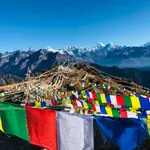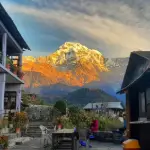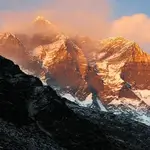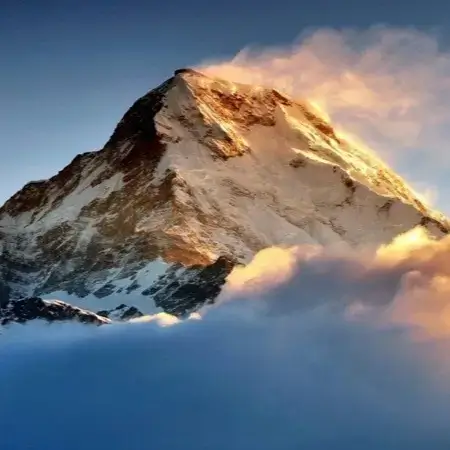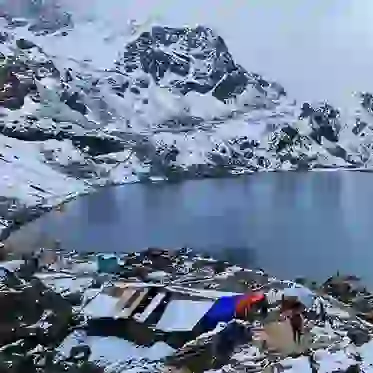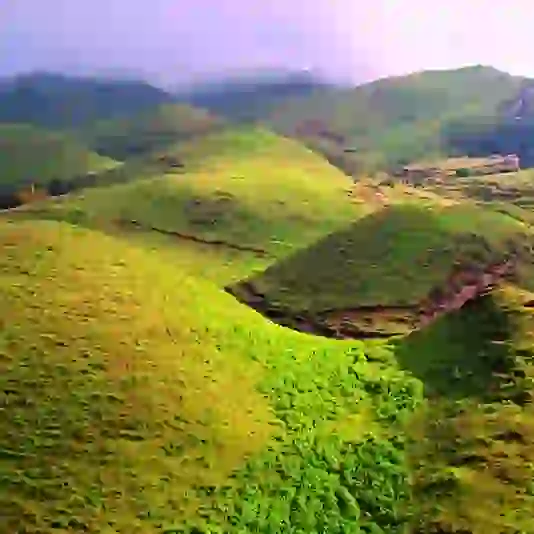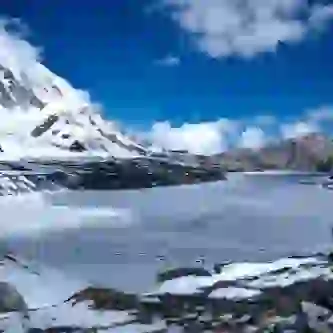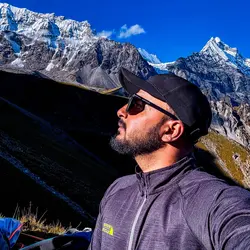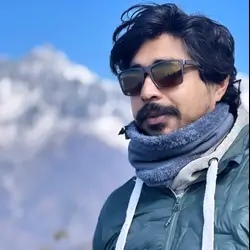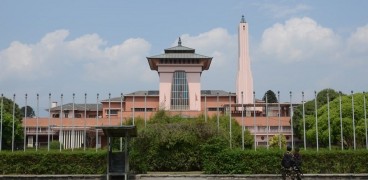The word here is Mustang, which is in the Tibetan language. It means the Plain of Aspiration. It is restricted and lonely. Even though it lies in a faraway corner of the Nepalese terrain, it attracts thousands upon thousands of people annually. People visit here to witness the magnificent and alluring Tibetan traditions and enjoy the lovely scenes.
Mustang lies at altitudes ranging from 2,000 to nearly 4,000 meters and is surrounded by mighty Himalayan giants such as Dhaulagiri (8,167 m) and Annapurna (8,091 m). The region borders the Tibetan Plateau, rich in Tibetan-influenced culture and dramatic, arid landscapes.
Many questions are circling on the internet about whether self-driving in Upper Mustang, Nepal, is remotely possible. The question that comes to every avid traveller's mind is whether self-driving is possible in Upper Mustang, Nepal. The answer to this question is undoubtedly yes,willingly. We have many queries and questions from our valued clients who want to go on a self-driving tour of Mustang.
Self-Driving in Upper Mustang
Upper Mustang is an isolated and culturally rich region on the western side of Nepal; formerly known as the ancient Kingdom of Lo. It is situated in the fine shadow of the great Himalayas, which gives it a desert-like landscape unlike much of the rest of the Asian nation of Nepal.
How can Upper Mustang be reached? (Vehicle and trek)
With improved road conditions, several modes of transportation could reach the Upper Mustang. Some of the vehicles that are used
-4wd Jeeps, which are the most reliable
-Motorbikes are for people who are lovers of outdoor activities.
Upper Mustang was once off-limits not only to foreigners but also to its locals for several decades. Now, people worldwide can possess the required permits and follow all the rules and regulations; one can book a package or even hire a professional and skilled guide to make this journey happen.
The Mustang is a treasure trove of housing and an excellent museum for Tibetan culture, arts, architecture, and festivals, all of which have deep roots in the sacred Buddhist religion. The monasteries, stupas, and primeval caves are the major highlights in Mustang Valley.
Self-driving in Upper Mustang for Nepalese citizens
Nepalese citizens can drive themselves to Upper Mustang, but some permits and conditions are involved.
Permits Required for Nepalese: Special Permit through the Annapurna Conservation Area Project (ACAP): Cost: Around NPR 1,000 for Nepalese (as of 2025). This is mandatory to enter the ACAP region, which also has the Mustang area.
Restricted Area Permit (RAP): This permit is required only beyond Kagbeni (for several Upper Mustang regions). Some local checkpoints may request additional paperwork or approval.
Vehicle Documents: Bluebook (vehicle registration), Driving License, Vehicle insurance, Local Government Approval
Some local municipalities need notification or approval to drive to Lo Manthang.
Road Condition: From Pokhara through Jomsom: Mostly blacktopped, some rough patches. From Jomsom to the Lo Manthang. A 4wd vehicle (Jeep, Scorpio, and Hilux) is also highly recommended for Nepalese travellers.
Self-driving in Upper Mustang for International Tourists
Self-driving in Upper Mustang as an international tourist is achievable, but strict rules and logistical requirements should be followed due to the area's restricted status and sensitive geography . Here's a summary of it:
Is it even allowed?
- Yes , but with some terms and conditions.
- Upper Mustang is also restricted , so international tourists could be accompanied by a professional licensed Nepali guide, even if they are also self-driving.
Requirements for Self-Driving:
- Special Permits:
- Restricted Area Permit (RAP) – USD 500 per individual for 10 days, then USD 50 per day.
- Annapurna Conservation Area Permit (ACAP) – NPR 3,000 (USD 25).
- TIMS Card (Trekkers' Information Management System) – NPR 2,000 (USD 17).
- These should be arranged with the officially registered Nepali trekking firms .
- Vehicle Documentation:
- International tourists cannot drive through foreign-registered vehicles in Upper Mustang.
- You could either:
- Rent a 4wd vehicle in Nepal (with Nepali registration)
- Or make a tour with your own driver and professional guide.
- Driver's License:
- Must hold an international driving permit (IDP) and an official copy of the national license.
- Local Guide Requirement:
- The mandatory licensed guide must accompany you throughout Upper Mustang.
- Vehicle Type:
- Due to rough, off-track terrain, a 4wd (such as a Scorpio, Land Cruiser, or similar vehicle) is also recommended.
Self-Driving to Upper Mustang: Total Cost Incurred for International Tourists
Travelling in Upper Mustang (usually in a rented 4wd or motorbike) gives an adventure and flexibility. Still, it comes with a set of costs that international tourists should know. Here's a breakdown of the estimated total cost for a self-drive tour at Upper Mustang:
1. Special Permits (Mandatory for Upper Mustang):
Upper Mustang is also restricted; international tourists can obtain specific permits.
Restricted Area Permit (RAP) :
-USD 500 per person for 10 days
-USD 50 per day foran additional day
- Annapurna Conservation Area Permit (ACAP):
-USD 30 per person (valid for the whole trip)
2. TIMS Card (Trekkers’ Information Management System) :
-USD 20 per person (for self-guided or organized tours)
Total Permit Cost for 10 Days:
- USD 550 per person
Vehicle-Related Costs (4wd Jeep or Motorbike):
Option A: Renting a 4wd Jeep (Self-Drive)
-Rental for 10–12 days: USD 120–150/day
-Fuel cost (round trip Pokhara–Lo Manthang): USD 250–300
-Extra costs: insurance and local driver/guide.
Total Vehicle Cost (10 days):
- USD 1,500–1,800
Option B: Motorbike Rental
-Royal Enfield (350–500cc): USD 30–50/day
-Fuel (approx. 400–450 km round trip): USD 80–100
-Helmet, gear, and maintenance backup: USD 50–100
Total Bike Cost (10 days) :
- USD 400–600
3. Accommodation & Meals:
- Tea houses or basic guesthouses: USD 10–20/night
-Meals (Dal Bhat, snacks, tea): USD 20–30/day
Total for 10 Days :
- USD 300–500 per person
4. Optional Guide staff
Even for impressive self-driving, a licensed guide is also mandatory for the permit process at the great Upper Mustang.
-Guide fee: USD 30–40/day
-Total for 10 days: USD 300–400
-Porter (if needed): USD 20–25/day
- Guide Total: USD 300–400
5. Miscellaneous Costs
- Insurance (travel + vehicle): USD 50–100
- Entry fees for monasteries or cultural sites: USD 20–30
- Internet/charging at guesthouses: USD 10–20
You can book your vehicle from Hop Nepal for your journey to the once-restricted valley. Moving, we begin our Drive to Upper Mustang Nepal tour from the start when Lo Manthang was connected to the road.
After the long drive, we will offer you a self-drive to Lo Manthang. This is a tremendous and invaluable opportunity if you are a fan, love adventure, and want to go to Upper Mustang in a quality vehicle. We also give you a quality Toyota Land Cruiser. In this fascinating Jeep tour, you will start your journey from Beni Bazar, where the off-road begins at Mustang.
7-Day Self-Drive Itinerary for Upper Mustang
Day 1: Pokhara – Tatopani – Jomsom
Day 2: Jomsom → Kagbeni → Chele
Day 3: Chele → Syangboche → Ghiling → Ghami
Day 4: Ghami → Charang → Lo Manthang
Day 5: Explore Lo Manthang (Day Trip to Chhoser Caves)
Day 6: Lo Manthang → Muktinath
Day 7: Muktinath → Jomsom → Pokhara
Frequently Asked Questions about Upper Mustang, Nepal
1. Can You Drive to Upper Mustang?
A four-wheel drive is required while you are on your way to Upper Mustang. This region has a restricted feel, and one needs very special permits and proper rules and regulations. Registration must also be available for all Nepalese trek firms, which is vital when coming here.
2.Does snowfall occur in the Upper Mustang area?
Snowfall in the great Lower Mustang also occurs in the chilling months of November or December, which rely heavily on weather timings and patterns. Snow starts mid-December through the latter days of February at Upper Mustang and from October through the cold months of January and February, through the famed and mystical Nepalese villages like Kagbeni and Jomsom .
3.How hard is the fascinating Upper Mustang Tour?
The hardness and possibility of the Upper Mustang trek depend on factors such as fitness level and prior trek toughness. Generally, it is considered an easy-to-moderate trek with daunting sections like high terrain, sudden altitudes, and changing weather patterns.
4.How many days are yourequired to complete Upper Mustang?
Well, it depends on your itinerary. The average number of days you need is 7, while some groups extend their stay at Mustang to 14 days.
5.Can we go through Upper Mustang by bus?
One can board a bus from Sajya Yatayat Depot until your journey concludes at Upper Mustang, which takes 21 to 23 hours.
6.Why has Upper Mustang been a forbidden area till now?
The area is restricted for border security and to lessen illegal excursions between the two nations. The first main reason is that Upper Mustang is a rare area that could be the open border with another country, Tibet.
7.What is the climatic condition of the Upper Mustang Area?
The Upper Mustang area has a tolerable cold desert climate, which is dry and cold throughout the year.
8. What is the Self-Driving to Upper Mustang Distance
The total distance for a self-drive from Kathmandu to Upper Mustang (Lo Manthang) is approximately 462 kilometres (287 miles). Depending on road conditions and weather, this journey typically takes 12 to 16 hours. The drive involves navigating rugged terrain, river crossings, and high-altitude passes


